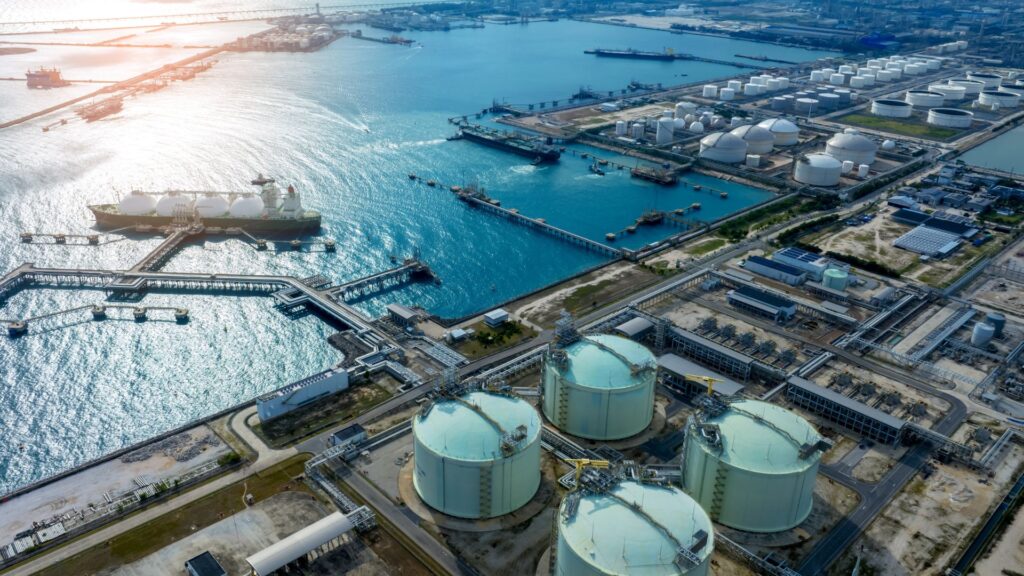EPA and DOE Allocate $850 Million to Cut Methane Emissions in Oil and Gas Sector

Funding from President Biden’s Investing in America agenda builds on nearly 100 cross-government actions that are sharply reducing methane pollution in support of clean air, good jobs and climate action
The U.S. Environmental Protection Agency and the U.S. Department of Energy announced that applications are open for $850 million in federal funding for projects that will help monitor, measure, quantify and reduce methane emissions from the oil and gas sectors as part of President Biden’s Investing in America agenda. Oil and natural gas facilities are the nation’s largest industrial source of methane, a climate “super pollutant” that is many times more potent than carbon dioxide and is responsible for approximately one third of the warming from greenhouse gases occurring today. The announcement builds on unprecedented action across the Biden Administration to dramatically cut methane pollution, with agencies taking nearly 100 actions in 2023 alone, including the finalization of an EPA rule that will yield an 80% reduction in methane emissions from covered oil and gas facilities.
This funding from the Inflation Reduction Act—the largest climate investment in history—will help mitigate legacy air pollution, create good jobs in the energy sector and disadvantaged communities, reduce waste and inefficiencies in U.S. oil and gas operations, and realize near-term emissions reductions, helping the United States reach President Biden’s ambitious climate and clean air goals. The funding will specifically help small oil and natural gas operators reduce methane emissions and transition to available and innovative methane emissions reduction technologies, while also supporting partnerships that improve emissions measurement and provide accurate, transparent data to impacted communities. Today’s announcement constitutes a key part of broader technical and financial assistance to be provided by the Methane Emissions Reduction Program.
“Today, we’re building on strong standards and historic progress to cut methane pollution and protect communities across the country,” said EPA Administrator Michael S. Regan. “These investments from President Biden’s Investing in America agenda will drive the deployment of available and advanced technologies to better understand where methane emissions are coming from. That will help us more effectively reduce harmful pollution, tackle the climate crisis and create good-paying jobs.”
“As we continue to accelerate the nation’s clean energy transition, we are taking steps now to drastically reduce harmful emissions from America’s largest source of industrial methane – the oil and gas sector,” said U.S. Secretary of Energy Jennifer M. Granholm. “I am proud to partner with EPA to help revitalize energy communities and deliver long-lasting health and environmental benefits across the country.”
“President Biden’s historic investment agenda has enabled the U.S. to aggressively and ambitiously take the actions we need to decarbonize every sector of the economy. We are making significant progress in our efforts to cut pollution – including super-pollutants like methane – while creating thousands of quality jobs and lowering energy costs for Americans,” said Assistant to President Biden and National Climate Advisor Ali Zaidi. “From implementing the U.S. Methane Emissions Reduction Action Plan that lays out a detailed roadmap for the federal government, to launching a Methane Task Force that brings all relevant agencies together around robust implementation, to hosting the first-ever White House methane summit that has catalyzed cross-sector partnerships, President Biden’s leadership on tackling methane is part of a comprehensive and historic climate effort that is spurring technological innovation, creating good-paying jobs and economic opportunity, cutting pollution in every sector, and holding polluters accountable. Today’s investments further those aims by providing the resources needed to monitor methane emissions and rapidly identify potential leaks to help protect our communities and planet.”
The primary objectives of this funding opportunity announcement are to:
- Help small operators significantly reduce methane emissions from oil and natural gas operations, using commercially available technology solutions for methane emissions monitoring, measurement, quantification and mitigation.
- Accelerate the repair of methane leaks from low-producing wells and the deployment of early-commercial technology solutions to reduce methane emissions from new and existing equipment such as natural gas compressors, gas-fueled engines, associated gas flares, liquids unloading operations, handling of produced water and other equipment leakage.
- Improve communities’ access to empirical data and participation in monitoring through multiple installations of monitoring and measurement technologies while establishing collaborative relationships between equipment providers and communities.
- Enhance the detection and measurement of methane emissions from oil and gas operations at regional scale, while ensuring nationwide data consistency through the creation of collaborative partnerships. These partnerships will span the country’s oil and gas-producing regions and draw in oil and natural gas owners and operators, universities, environmental justice organizations, community leaders, unions, technology developers, Tribes, state regulatory agencies, non-governmental research organizations, federally funded research and development centers and DOE’s National Laboratories.
Related Article: EPA Releases 2024-2027 Climate Adaptation Plan to Enhance U.S. Climate Resilience
A competitive solicitation for this funding will enable a broad range of eligible U.S. entities to apply, including industry, academia, non-governmental organizations, Tribes and state and local governments. This funding opportunity is expected to achieve measurable outcomes for skilled workforce training, community involvement and environmental justice. Funding applicants are required to submit Community Benefits Plans to demonstrate meaningful engagement with and tangible benefits to the communities in which the proposed projects will be located. These plans must provide details on the applicant’s commitments to community and labor engagement, quality job creation, diversity, equity, inclusion and accessibility, and benefits to disadvantaged communities as part of the Justice40 Initiative. Established in Executive Order 14008, the President’s Justice40 Initiative set the goal that 40% of the overall benefits of certain federal climate, clean energy and other investments flow to disadvantaged communities that are marginalized by underinvestment and overburdened by pollution.











